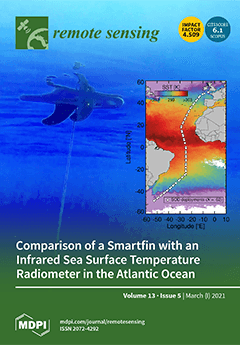Vibrio cholerae, the bacterium responsible for the disease cholera, is a naturally-occurring bacterium, commonly found in many natural tropical water bodies. In the context of the U.N. Sustainable Development Goals (SDG) targets on health (Goal 3), water quality (Goal 6), life under
[...] Read more.
Vibrio cholerae, the bacterium responsible for the disease cholera, is a naturally-occurring bacterium, commonly found in many natural tropical water bodies. In the context of the U.N. Sustainable Development Goals (SDG) targets on health (Goal 3), water quality (Goal 6), life under water (Goal 14), and clean water and sanitation (Goal 6), which aim to “ensure availability and sustainable management of water and sanitation for all”, we investigated the environmental reservoirs of
V. cholerae in Vembanad Lake, the largest lake in Kerala (India), where cholera is endemic. The response of environmental reservoirs of
V. cholerae to variability in essential climate variables may play a pivotal role in determining the quality of natural water resources, and whether they might be safe for human consumption or not. The hydrodynamics of Vembanad Lake, and the man-made barrier that divides the lake, resulted in spatial and temporal variability in salinity (1–32 psu) and temperature (23 to 36 °C). The higher ends of this salinity and temperature ranges fall outside the preferred growth conditions for
V. cholerae reported in the literature. The bacteria were associated with filtered water as well as with phyto- and zooplankton in the lake. Their association with benthic organisms and sediments was poor to nil. The prevalence of high laminarinase and chitinase enzyme expression (more than 50 µgmL
−1 min
−1) among
V. cholerae could underlie their high association with phyto- and zooplankton. Furthermore, the diversity in the phytoplankton community in the lake, with dominance of genera such as
Skeletonema sp.,
Microcystis sp.,
Aulacoseira sp., and
Anabaena sp., which changed with location and season, and associated changes in the zooplankton community, could also have affected the dynamics of the bacteria in the lake. The probability of presence or absence of
V. cholerae could be expressed as a function of chlorophyll concentration in the water, which suggests that risk maps for the entire lake can be generated using satellite-derived chlorophyll data. In situ observations and satellite-based extrapolations suggest that the risks from environmental
V. cholerae in the lake can be quite high (with probability in the range of 0.5 to 1) everywhere in the lake, but higher values are encountered more frequently in the southern part of the lake. Remote sensing has an important role to play in meeting SDG goals related to health, water quality and life under water, as demonstrated in this example related to cholera.
Full article





